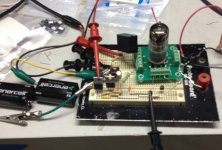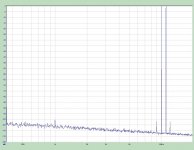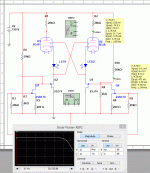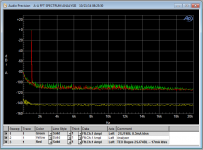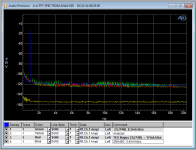SY's newest baby in LA Volume 7.
I don't think that the 3.18uS compensation (Neumann) is necessary (the 91R):
Without it you'd be hard pressed to get an RIAA network which hugs the curves so tightly:
I can't wait to start soldering this one up!
I don't think that the 3.18uS compensation (Neumann) is necessary (the 91R):
An externally hosted image should be here but it was not working when we last tested it.
Without it you'd be hard pressed to get an RIAA network which hugs the curves so tightly:
An externally hosted image should be here but it was not working when we last tested it.
I can't wait to start soldering this one up!
The second chart is deviation from RIAA with gain at 1kHz set to 0. I guess -2.22e-16 is pretty close to zero. If it performs this well, it's to the standards of the best phono pre's reviewed by Stereophile.
With luck, I'll have the new PCBs up, running, and tested this weekend. "Real" work and an overdue AX article got in the way.
Here's an idea for a bias supply -- if you run the filaments from a.c. the LR8N3 will regulate the 150+ B+ to a convenient level for the LT3439 quiet switcher. The output is filtered and regulated with an LT3015 for a very quiet bias supply to the P-channel jfet:
in surface mount, the entire thing should take up real estate of less than 2 square inches.
An externally hosted image should be here but it was not working when we last tested it.
in surface mount, the entire thing should take up real estate of less than 2 square inches.
Did you get it soldered up yet?
Yes. The next issue of Linear Audio will have details. Suffice it to say that the performance is reasonably good, if by "reasonably good" one means distortion that challenges the test set residuals (-100dBV) and overload margins that exceed 50dB ref 5mV.
I compared the input stage with a 2SJ74BL of 23mS, and a '74 "fake" of 2mS -- will have to run a noise test at some point:
An externally hosted image should be here but it was not working when we last tested it.
OK, I can see the merit. But much more matching and 3dB worse follower noise. Tradeoffs, tradeoffs...😀
Did you consider a BJT TEO? I've been simulating.
While Morgan Jones bemoans the absence of through-hole matched transistors, those from ThatCorp (THAT300) should fill the bill and are available as DIP.
While Morgan Jones bemoans the absence of through-hole matched transistors, those from ThatCorp (THAT300) should fill the bill and are available as DIP.
Did you consider a BJT TEO?
Not so much, no- biasing becomes slightly more complicated (enhancement vs depletion), and selection is critical because of current noise. Possible, just more of a PITA since the FETs drop in so easily.
I've been doing some comparative measurements of TEO with an input transformer vs. His Master's Noise for MC use. The TEO plus transformer is better. I'll see if I can dig out some of the spectra when I get back home- TEO has significantly lower HF intermod (though this is a bit of numbers-chasing, HMN is already way lower than any audible threshold).
I am pretty pleased at the performance of the bogus 2SJ74s -- here's another chart with the 2N5460 -- slightly worse than either of the other 2.
Gain was 34.7dB for the 2SJ74BL, 33.9dB for the bogus parts and 32.0 dB for the 2N5460.
Looking at the graph, I am wondering if the 1/f noise is lower for the 2N5460 -- interesting because that's where the gain is in the RIAA filter.
Gain was 34.7dB for the 2SJ74BL, 33.9dB for the bogus parts and 32.0 dB for the 2N5460.
Looking at the graph, I am wondering if the 1/f noise is lower for the 2N5460 -- interesting because that's where the gain is in the RIAA filter.
Attachments
Last edited:
That's a much better result than I'd expect based on the specs (2N5460's en is rated at 60 nV/rt Hz). What was the current (idss on the 5460 isn't very high...)?
- Home
- Source & Line
- Analogue Source
- "Equal Opportunity" MM Pre
